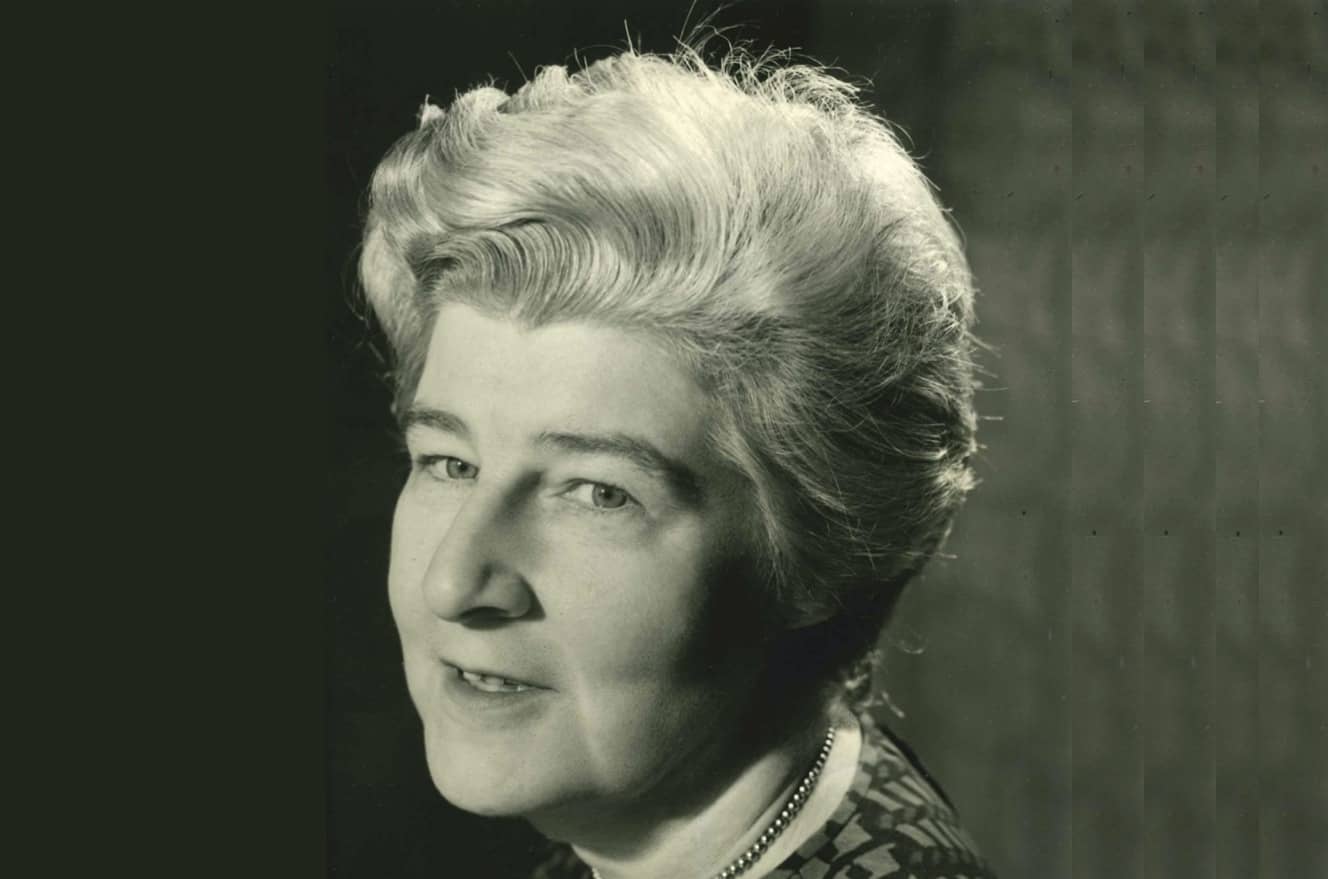
www.buildingsandcities.org/insights/news/pat-hillebrandt.html
Remembering Patricia Hillebrandt

Jim Meikle reflects on the recent passing of Pat Hillebrandt, whose professional life helped to establish the discipline of construction economics by researching the construction industry, its institutions and firms.
Dr Patricia (Pat) Hillebrandt died on 21 July 2022 at the age of 92. From the late 1950s to the late 1970s, with appointments at Costain, the construction contractor, the UK National Economic Development Office (NEDO) and the Bartlett School at University College London (UCL) she helped establish the emerging discipline of construction economics. Her Economic Theory and Construction (1974) is a seminal piece of work. From 1980 she worked largely as an independent consultant although with a long-standing academic association with the University of Reading.
Pat did her undergraduate economics part time at UCL and on graduation joined Plant Protection Ltd as an assistant economist. While there she started work on her PhD - on the economics of weedkillers. Her first contact with construction was in 1957, when she joined Costain.
I first met Pat in 1980 when we were both employed on a World Bank sponsored study of the Egyptian Construction Contracting Industry. I had previously worked in Egypt and other African countries but this was my first serious exposure to the economics of construction and the industry's role in national development countries. The rationale for the study was a concern about Egypt's construction industry capacity to address an ambitious development programme. I learned a lot and made a lifelong family friend.
Pat and I subsequently worked on a range of studies in the UK and Europe and, in 1992, another World Bank study, in Russia. That project, in the early Yeltsin days, was to look at the situation, and make recommendations for change, in the Housing and Construction Sector. Our recommendations were not welcomed by the Bank, whose view was that the answer to most, if not all, issues was privatisation. The problem, obvious to us, was that the construction 'assets' - enterprises and structures - to be privatised were in fact mostly liabilities. The enterprises were generally inefficient, with outdated equipment and producing poor output; the structures were often poorly constructed and inadequately maintained.
In 2005 she was awarded an honorary doctorate by the University of Reading and Construction Management and Economics published a Festschrift in her honour. For almost fifty years Pat advised, taught, consulted and wrote on the structure and performance of construction industries and firms. Pat would have admitted herself that she was less concerned with construction projects.
Pat was generous with her time and hospitality and will be missed by many, locally, nationally and throughout the world.
Latest Peer-Reviewed Journal Content
Youth engagement in urban living labs: tools, methods and pedagogies
N Charalambous, C Panayi, C Mady, T Augustinčić & D Berc
Co-creating urban transformation: a stakeholder analysis for Germany’s heat transition
P Heger, C Bieber, M Hendawy & A Shooshtari
Placemaking living lab: creating resilient social and spatial infrastructures
M Dodd, N Madabhushi & R Lees
Church pipe organs: historical tuning records as indoor environmental evidence
B Bingley, A Knight & Y Xing
A framework for 1.5°C-aligned GHG budgets in architecture
G Betti, I Spaar, D Bachmann, A Jerosch-Herold, E Kühner, R Yang, K Avhad & S Sinning
Net zero retrofit of the building stock [editorial]
D Godoy-Shimizu & P Steadman
Co-learning in living labs: nurturing civic agency and resilience
A Belfield
The importance of multi-roles and code-switching in living labs
H Noller & A Tarik
Researchers’ shifting roles in living labs for knowledge co-production
C-C Dobre & G Faldi
Increasing civic resilience in urban living labs: city authorities’ roles
E Alatalo, M Laine & M Kyrönviita
Co-curation as civic practice in community engagement
Z Li, M Sunikka-Blank, R Purohit & F Samuel
Preserving buildings: emission reductions from circular economy strategies in Austria
N Alaux, V Kulmer, J Vogel & A Passer
Urban living labs: relationality between institutions and local circularity
P Palo, M Adelfio, J Lundin & E Brandão
Living labs: epistemic modelling, temporariness and land value
J Clossick, T Khonsari & U Steven
Co-creating interventions to prevent mosquito-borne disease transmission in hospitals
O Sloan Wood, E Lupenza, D M Agnello, J B Knudsen, M Msellem, K L Schiøler & F Saleh
Circularity at the neighbourhood scale: co-creative living lab lessons
J Honsa, A Versele, T Van de Kerckhove & C Piccardo
Positive energy districts and energy communities: how living labs create value
E Malakhatka, O Shafqat, A Sandoff & L Thuvander
Built environment governance and professionalism: the end of laissez-faire (again)
S Foxell
Co-creating justice in housing energy transitions through energy living labs
D Ricci, C Leiwakabessy, S van Wieringen, P de Koning & T Konstantinou
HVAC characterisation of existing Canadian buildings for decarbonisation retrofit identification
J Adebisi & J J McArthur
Simulation and the building performance gap [editorial]
M Donn
Developing criteria for effective building-sector commitments in nationally determined contributions
P Graham, K McFarlane & M Taheri
Join Our Community

The most important part of any journal is our people – readers, authors, reviewers, editorial board members and editors. You are cordially invited to join our community by joining our mailing list. We send out occasional emails about the journal – calls for papers, special issues, events and more.
We will not share your email with third parties. Read more



Latest Commentaries
COP30 Report
Matti Kuittinen (Aalto University) reflects on his experience of attending the 2025 UN Conference of the Parties in Belém, Brazil. The roadmaps and commitments failed to deliver the objectives of the 2025 Paris Agreement. However, 2 countries - Japan and Senegal - announced they are creating roadmaps to decarbonise their buildings. An international group of government ministers put housing on the agenda - specifying the need for reduced carbon and energy use along with affordability, quality and climate resilience.
Building-Related Research: New Context, New Challenges
Raymond J. Cole (University of British Columbia) reflects on the key challenges raised in the 34 commissioned essays for Buildings & Cities 5th anniversary. Not only are key research issues identified, but the consequences of changing contexts for conducting research and tailoring its influence on society are highlighted as key areas of action.